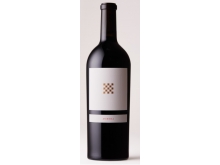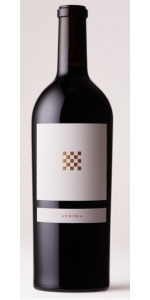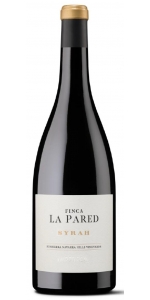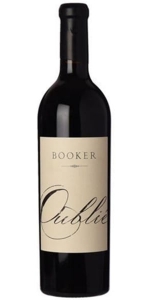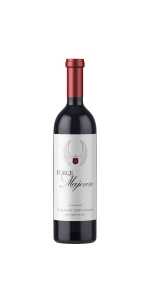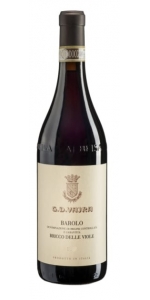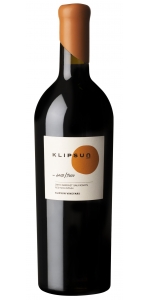Checkerboard Aurora Red 2019
| Country: | United States |
| Regions: | California California (Napa) |
| Winery: | Checkerboard Vineyards |
| Grape Type: | Cabernet Sauvignon |
| Organic: | Yes |
| Vintage: | 2019 |
| Bottle Size: | 750 ml |
Vintners Dennis O’Neil and Steph Martin began development of Checkerboard Vineyards in 1999 and retained winemaker Martha McClellan to create a portfolio of wines reflecting the mountainside. The estate includes four vineyard sites of different elevation, exposure and soil composition, providing the foundation for a portfolio that includes Checkerboard Aurora Vineyard, Checkerboard Coyote Ridge Vineyard, Checkerboard Nash Creek Vineyard, Checkerboard Kings Row, Checkerboard Sauvignon Blanc, and Checkerboard Rose. Grapes are harvested at dawn in micro-lots and delivered steps away to the winery where clusters are sorted, discarding any blemished ones. Individual berries are hand-selected for vinification and transferred for fermentation, by hand, to Taransaud wooden tanks, stainless tanks, and individual wooden barrels.
Farming is based on long-term sustainability and includes water conservation and monitoring, permanent cover crops planted in alternating rows, and the use of entomology for pest control and the development of soils with good organic matter and microbiology. Checkerboard Vineyards is a member of Fish Friendly Farming which promotes environmentally-friendly land practices and water quality management. Aurora Vineyard is located in a small valley midway up Diamond Mountain and on a large knoll at an elevation of 1,200 feet. The knoll bulges outward, giving the vineyard full Southern exposure and open light from the East and West and protection from Napa Valley’s summer fog. Six acres are planted in the knoll’s rich, volcanic soils that are riddled with basalt cobble in a loamy red clay. The remaining six acres are planted in a deep gravely mix of volcanic ash and chips of decomposed Rhyolite that were washed down from the steep, rocky crags of Diamond Mountain above.
There's a fresh, sweet aroma to the 2016 Checkerboard Aurora Vineyard that builds excitement and anticipation for what's to come. On approach, the palate is juicy and expansive and explodes with flavors of blackberry, mulberry, dark cherry, caramel, leaf tobacco and green olive. The wine continues with a voluptuousness that's linear and constant yet lifted by natural acidity. The finish is showy, long and lingering with finely polished tannins. An exceptional vintage.
Finca La Pared Syrah is made from 100 percent Syrah.
Finca La Pared Syrah shows an expressive nose of dark fruit aromas and a mineral character.
Intense, direct, playful. Balance of forces.
Review:
The first vintage here was 2018. The 2019 Syrah is a saturated purple hue with a smoking good bouquet of smoky black fruits, cured meats, and leather, and it hits the palate with full-bodied richness, a plush, layered mouthfeel, and ripe tannins. It's balanced, has a deep, rich, concentrated style, and a great finish.
-Jeb Dunnuck 93 Points
Booker Vineyard Oublie Red is made from 33% Syrah, 30% Grenache, 28% Mourvèdre, 5% Tannat, 4% Petite Sirah
Oublié's blend is always Grenache, Syrah and Mourvèdre – the California version of a Châteauneuf du Pape. The namesake is a play on the French term for "forgotten." Rhône varietals grow beautifully on the estate and Booker believes that they are far-too-often forgotten when you think of a California wine. Deep ruby/purple in color, this hearty expression of a Paso GSM boasts confident notes of boysenberry, licorice and cedar on the nose. On the palate, the taster is rewarded with lively flavors of raspberry coulis mingled with blonde roast coffee and chocolate ganache. For lovers of Mourvèdre, this vintage of Oublié will show off. It drinks bolder than prior vintages, mostly because the Mourvèdre was so special in '19.
Oublié is traditionally one of Booker's most food-friendly wines and should pair well with most dishes.
Review:
The 2019 Oublié is a blend of Syrah, Mourvèdre, Tannat and Petite Sirah with a medium ruby-purple color. The nose offers gregarious mixed berry preserves and accents of potpourri, mint and fragrant earth. The palate offers juicy appeal and powerful fruit with loads of spice and floral perfume, bursts of freshness and firm, pleasantly rustic tannins, finishing very long.
-Wine Advocate 97 Points
Force Majeure Cabernet Sauvignon Red Mountain is made from 100 percent Cabernet Sauvignon.
The estate Cabernet Sauvignon is grown primarily along the southwest ridge of the vineyard. The vines produce small berries with bountiful flavor, concentration and intensity, but also a good degree of finesse, excellent structure and layers of complexity that will continue to develop during extended bottle aging for those who want to cellar and age their wines. The wine is powerful, elegant, full-bodied.
Bottled unfined and unfiltered.100% free run
Pumpovers and punch-downs, up to 45 day macerations
Native yeast, 5 day cold soaks
22 months in 75% new French oak barrels
Fermented in concrete and stainless closed top tanks.
Review:
Another gem is the 2019 Cabernet Sauvignon Red Mountain Estate, a deep, concentrated, powerful Red Mountain Cabernet Sauvignon that I suspect will be up there with the legendary wines from this terroir. Beautiful cassis, graphite, lead pencil shavings, and damp earth notes give way to a full-bodied effort that has a liqueur of rocks-like minerality, flawless balance, building yet polished tannins, and a great finish. Hide bottles for 4-5 years, and it will evolve for 25-30 years if properly stored. Best After 2026.
-Jeb Dunnuck 98+ Points
G.D. Vajra Bricco Delle Viole Barolo is made from 100 percent Nebbiolo.
The Barolo Bricco delle Viole shows the signature verticality of its vineyard. The wine is beautifully layered and - while restrained as it’s always the case in the youth of Bricco delle Viole - it also shows a complexity of layers with purple flowers, sweet spices and mineral tones. The palate is noble, with a refined acid spine and profound tannins that promise a long aging potential.
Among the historical vineyards of Barolo, Bricco delle Viole is the highest and the closest to the Alps. It rises from 400 to 480 meters above sea level, on the Western ridge of the village. Its name, “Hill of Violets”, originates from the flowers that blossom early here due to the perfect south exposure. Up above the fogs, Bricco delle Viole enjoys the earliest sunrise and the last sunset every day. Thanks to its vines dating back to 1949 and -now- 1931, a dramatic diuturnal temperature range and this pure light, Bricco delle Viole generates a sophisticated and profound Barolo DOCG of bright aromatics, chiseled tannins and subtle minerality. 2018 is a vintage that shows many nuances of Bricco delle Viole: beyond the signature verticality of this site, the wine offers high tones laced with mineral nuances and plenty of energy and youth.
Review:
A juicy Barolo, with vibrant acidity and a fluid profile that exudes cherry, raspberry, mown hay, mineral and eucalyptus aromas and flavors. Tight yet long, with excellent potential.
#26 Wine Spectator Top 100 of 2023
The last wine poured at my tasting at the winery is the G.D. Vajra 2019 Barolo Bricco delle Viole. With its high vantage point in the hills west of Barolo, Bricco delle Viole is a world apart in terms of soils (with Sant'Agata marl and fossils) and even harvest times. Slow and careful ripening like the kind that characterizes fruit in 2019 renders a very delicate and ethereal expression with floral tones, wild mint and licorice. This organic wine is solid in build and structure. Indeed, Isidoro Vaira remarks that Nebbiolo tannins have changed since the 1970s and 1980s.
-Wine Advocate 97+ Points
Jeweled in appearance, the 2019 Barolo Bricco Delle Viole may be the best wine I have tried yet from Vajra. Its gorgeous and alluring perfume of fresh roses is followed by a Burgundian, elegant red with incredible length and no harsh edges, fine and present tannins, and beautiful, graceful concentration. It is drinking well now, and I will be trying to get my hands on as much of this as possible. Drink 2025-2045.
-Jeb Dunnuck 97 Points
Klipsun Cabernet Sauvignon Red Mountain is made from 86% Cabernet Sauvignon, 7% Merlot, 7% Syrah.
Fruit aroma of blackberry, mulberry and boysenberry, interlaced with a spicy oak note. As the wine ages in the bottle the oak and fruit aromas will meld into a complex medley of cedar and cigar box. Rich blackberry and a hint of wild sage normally found. Pleasant acidity and a rich, balanced mouthfeel followed by a well-developed mid palate. The result is a tannin structure that is evident but seamless. The finish is smooth and lingering.
Review:
Blended with 7% Merlot and 7% Syrah, the 2019 Cabernet Sauvignon Red Mountain starts with a bold, generous and dark-fruited nose with a rich and robust expression that boasts a seductive oaky essence. Full-bodied, the palate is still tight and will benefit from additional aging in bottle, yet I can see it has good bones now that will allow it to age gracefully for about two decades. Gobs of dark red and black fruits sway with a delightful mineral tension before concluding with a long, winding and spicy finish. The wine rested for 20 months in all new French oak before being bottled and left to rest for more than a year prior to release.
-Wine Advocate 95 Points
Vintners Dennis O’Neil and Steph Martin began development of Checkerboard Vineyards in 1999 and retained winemaker Martha McClellan to create a portfolio of wines reflecting the mountainside. The estate includes four vineyard sites of different elevation, exposure and soil composition, providing the foundation for a portfolio that includes Checkerboard Aurora Vineyard, Checkerboard Coyote Ridge Vineyard, Checkerboard Nash Creek Vineyard, Checkerboard Kings Row, Checkerboard Sauvignon Blanc, and Checkerboard Rose. Grapes are harvested at dawn in micro-lots and delivered steps away to the winery where clusters are sorted, discarding any blemished ones. Individual berries are hand-selected for vinification and transferred for fermentation, by hand, to Taransaud wooden tanks, stainless tanks, and individual wooden barrels.
Farming is based on long-term sustainability and includes water conservation and monitoring, permanent cover crops planted in alternating rows, and the use of entomology for pest control and the development of soils with good organic matter and microbiology. Checkerboard Vineyards is a member of Fish Friendly Farming which promotes environmentally-friendly land practices and water quality management. Aurora Vineyard is located in a small valley midway up Diamond Mountain and on a large knoll at an elevation of 1,200 feet. The knoll bulges outward, giving the vineyard full Southern exposure and open light from the East and West and protection from Napa Valley’s summer fog. Six acres are planted in the knoll’s rich, volcanic soils that are riddled with basalt cobble in a loamy red clay. The remaining six acres are planted in a deep gravely mix of volcanic ash and chips of decomposed Rhyolite that were washed down from the steep, rocky crags of Diamond Mountain above.
Checkerboard Vineyards is located on the southeast facing slope of Diamond Mountain in Napa Valley. The estate includes a winery, cave and four vineyard sites, joined by a two-and-one-half mile drive spanning the valley floor to the top of the ridge. This dramatic setting is the inspiration for the distinctive, exceptional wines of Checkerboard Vineyards.
The winery is dedicated solely to the vinification of Checkerboard Vineyards wines and was built to control every aspect of winemaking.
Eight custom Taransaud French Oak Upright Casks are used to create numerous, small lots of wine from micro-harvests of each vineyard.
he estate has four vineyard sites of different elevation, exposure and soil composition.
Spring Meadows Vineyard is situated at 600 feet in elevation on a meadow surrounded by Oak, big leaf Maple and Madrone trees. The soils are rich from the neighboring woods and the site enjoys full east to west sun exposure.
Coyote Ridge Vineyard is located on a long undulating ridgeline that runs Eastward downhill from the Aurora Vineyard knoll. The vineyard blocks are perched on the hillside above Nash Creek Canyon to the South and share the same red iron oxide clay as the upper blocks of Aurora Vineyard. Though the soils are similar, the Southern and slightly Eastern exposure of Coyote Ridge, along with its lower 900 foot elevation, allows the top of the summer fog line to reach the Vineyard. This creates an entirely different microclimate and growing cycle for its vines.
Aurora Vineyard is nestled in a small valley midway up Diamond Mountain on a large knoll located at an elevation of 1,200 feet. The knoll projects off the mountainside, giving the vineyard full Southern exposure and open light from the East and West and protection from Napa Valley's summer fog. Six acres of the vineyard are planted in the knoll's rich, volcanic soils that are riddled with basalt cobble in a loamy red clay. The remaining six acres are planted in a deep gravely mix of white volcanic ash and chips of decomposed Rhyolite that were washed down from the steep, rocky crags of Diamond Mountain above.
At 2,000 feet in elevation and at the top of the Estate is Nash Creek Vineyard. The blocks rest just below the East ridge of Diamond Mountain on a steeply sloping terrace composed entirely of Rhyolite. At this elevation, winter temperatures are colder and extend into early Spring, and bud break takes place up to six weeks later than our vineyards below. By early Summer, Nash Creek Vineyard catches up and surpasses the growth of the Aurora and Coyote Ridge Vineyards. This due to the lingering daytime heat absorbed by its rocky base and the nighttime convective warmth rising from the Napa Valley below, providing nearly round-the-clock grape maturation.
Farming practices at Checkerboard Vineyards are based on long-term sustainability and include water conservation and monitoring, permanent cover crops planted in alternating rows, and the use of entomology for pest control.
Vintners Dennis O’Neil and Steph Martin began development of Checkerboard Vineyards in 1999 and retained winemaker Martha McClellan to create a portfolio of wines reflecting the mountainside. The estate includes four vineyard sites of different elevation, exposure and soil composition, providing the foundation for a portfolio that includes Checkerboard Aurora Vineyard, Checkerboard Coyote Ridge Vineyard, Checkerboard Nash Creek Vineyard, Checkerboard Kings Row, Checkerboard Sauvignon Blanc, and Checkerboard Rose. Grapes are harvested at dawn in micro-lots and delivered steps away to the winery where clusters are sorted, discarding any blemished ones. Individual berries are hand-selected for vinification and transferred for fermentation, by hand, to Taransaud wooden tanks, stainless tanks, and individual wooden barrels.
Farming is based on long-term sustainability and includes water conservation and monitoring, permanent cover crops planted in alternating rows, and the use of entomology for pest control and the development of soils with good organic matter and microbiology. Checkerboard Vineyards is a member of Fish Friendly Farming which promotes environmentally-friendly land practices and water quality management. Aurora Vineyard is located in a small valley midway up Diamond Mountain and on a large knoll at an elevation of 1,200 feet. The knoll bulges outward, giving the vineyard full Southern exposure and open light from the East and West and protection from Napa Valley’s summer fog. Six acres are planted in the knoll’s rich, volcanic soils that are riddled with basalt cobble in a loamy red clay. The remaining six acres are planted in a deep gravely mix of volcanic ash and chips of decomposed Rhyolite that were washed down from the steep, rocky crags of Diamond Mountain above.
There's a fresh, sweet aroma to the 2016 Checkerboard Aurora Vineyard that builds excitement and anticipation for what's to come. On approach, the palate is juicy and expansive and explodes with flavors of blackberry, mulberry, dark cherry, caramel, leaf tobacco and green olive. The wine continues with a voluptuousness that's linear and constant yet lifted by natural acidity. The finish is showy, long and lingering with finely polished tannins. An exceptional vintage.
- back
Gaja Costa Russi Nebbiolo is made from 100 percent Nebbiolo.
Costa (Italian for the side of the hill facing the sun) Russi (the nickname of the former owner) is ruby red in color, with a captivating aroma of blackberries, violets and roasted coffee beans. The purity of the palate is layered with dark fruit flavors and complex tannins.
STYLE: Complex, Elegant
FLAVOR: Blackberry, Violet, Roasted Coffee Beans
Review:
The 2016 Barbaresco Costa Russi is a more floral, sappy Barbaresco, offering textbook notes of black cherries, rose petals, sappy herbs, and violets. It's one of the more vibrant, juicy, and perfumed wines in the lineup and has medium to full body, bright yet integrated acidity, and the same incredibly polished yet certainly present tannins found in all these 2016s. This is another elegant 2016 that never puts a foot wrong.
-Jeb Dunnuck 98+ Points
The 2016 Barbaresco Costa Russi is ripe, creamy and enveloping, as it so often is, and yet also preserves the super classic sense of structure that runs through all these wines. In 2016, Costa Russi has an extra touch of mid-palate sweetness that gives the wine its sense of immediacy. Succulent red cherry, rosewater, kirsch, mint and dried flowers meld together in the glass. Soft and sensual, with tons of allure, Costa Russi is another winner from Gaja. Time in the glass brings out the wine's density and tannins, both of which it has in spades.
- Antonio Galloni 98
This delicate red features floral, strawberry, cherry, currant and loamy earth aromas and flavors, showing terrific balance. A line of firm tannins adds support, and the finish is long and expansive. Best from 2023 through 2045. 175 cases imported.
-Wine Spectator 97 Points
Ancien Pinot Noir is 100% Pinot Noir.
The Mink Vineyard is located next door to the winery, in the Coombsville Viticultural Area of Napa Valley. Open to the same morning fogs and afternoon breezes that cool Carneros to the west, Coombsville is consistently one of the coolest pockets in Napa. Mink sits inside a small “bowl”, allowing cooler air to settle during the evenings, and making Mink’s mesoclimate a couple degrees cooler, even, than the surrounding hills. But the real secret to Mink’s explosive flavors, smooth, mouth-coating minerality, comes from the soil. Underneath is a layer of compressed volcanic ash, called tufa. The tufa drains the topsoil, storing moisture in its porous structure. The vines are able, with some work, to grow roots into the tufa layer, accessing moisture during the long, dry growing season.
The Mink Pinot Noir exhibits bright and refreshing notes of pomegranate, cherry, and fresh herbs. It gradually opens to deeper and darker berry fruit, blueberry and plum. This vintage is on the more structured side of the spectrum and will continue to evolve over time. Its enchanting mouthwatering minerality invite sip after sip together with bite after bite. A lively wine at release but it will continue to improve over the next 4 - 7 years and can age well beyond a decade as shown by its 20+ year track record.
Review:
"Ripe in flavor and luxurious in texture, this wine is difficult to put down. It is saturated in black cherry, black currant and black fig while staying light on the palate. It's a wonderful indulgence to enjoy by itself or with a roast pheasant or duck breast. — Jim GORDON"
- Wine Enthusiast (April 1st 2024), 95 pts

